Daniels' Running Formula
My self-coached training for the 50th Berlin marathon 2024
How I self-coached for the 50th Berlin Marathon
Fun facts
- Old PB for Marathon: 3:42 hours (Berlin marathon, September 2023)
- New PB for Marathon: 3:19 hours (Berlin marathon, September 2024)
- Training plan: 2Q program, Daniels’ Running Formula book
- Training duration: 3 months
My preparation is devided into four parts.
1. Theory
I often wondered, “Why do others improve their running so quickly, making significant progress in just a few months?” This question sparked my serious study of long-distance running, primarily using books and YouTube, along with research on Reddit, particularly in r/AdvancedRunning. The book I relied on was Daniels’ Running Formula (4th edition), and I watched many relevant YouTube videos (links at the end). A particular focus was on endurance training through the Polarized method by Stephen Seiler, which aligns with the 80/20 approach in Matt Fitzgerald’s 80/20 Running.

For my training program, I adapted Jack Daniels’ plan, mixing it with the Polarized method. The core principles of both approaches are threefold:
- Understanding the purpose of each training type (Easy, Threshold, Interval, Repetition, Long run)
- Training for optimal efficiency without risking injury (the main pillar of Daniels)
- Enhancing running economy by avoiding intermediate runs, instead focusing on easy and intense efforts.
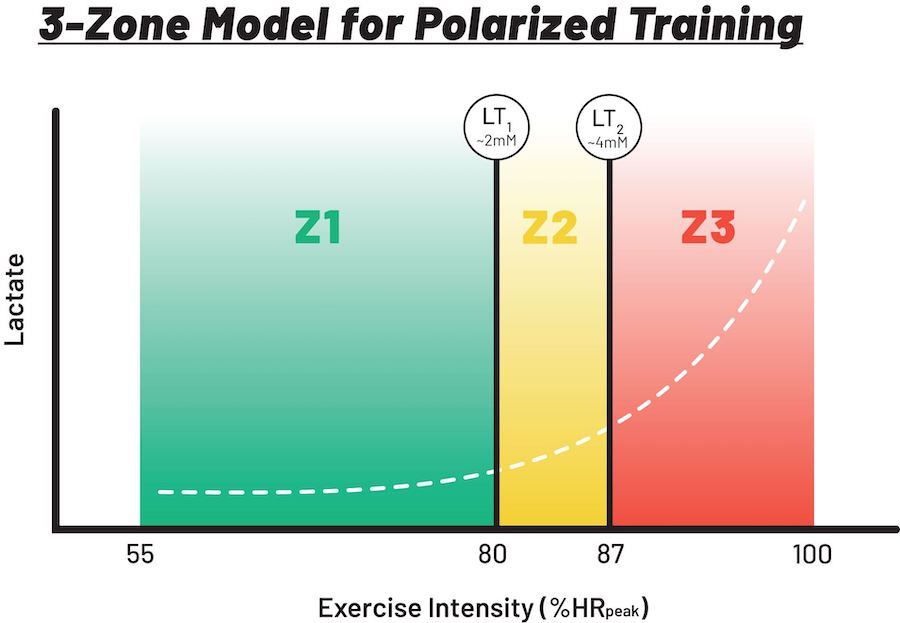
For the (3), mmost of mileage is easy run (80-85%) and the rest (15-20%) is quality training (speed work). This is exactly the 80/20 concept, aka Polarized method, developed by Stephen Sieler
understanding the purpose of each training session (details are clear in the book or summary videos), , and
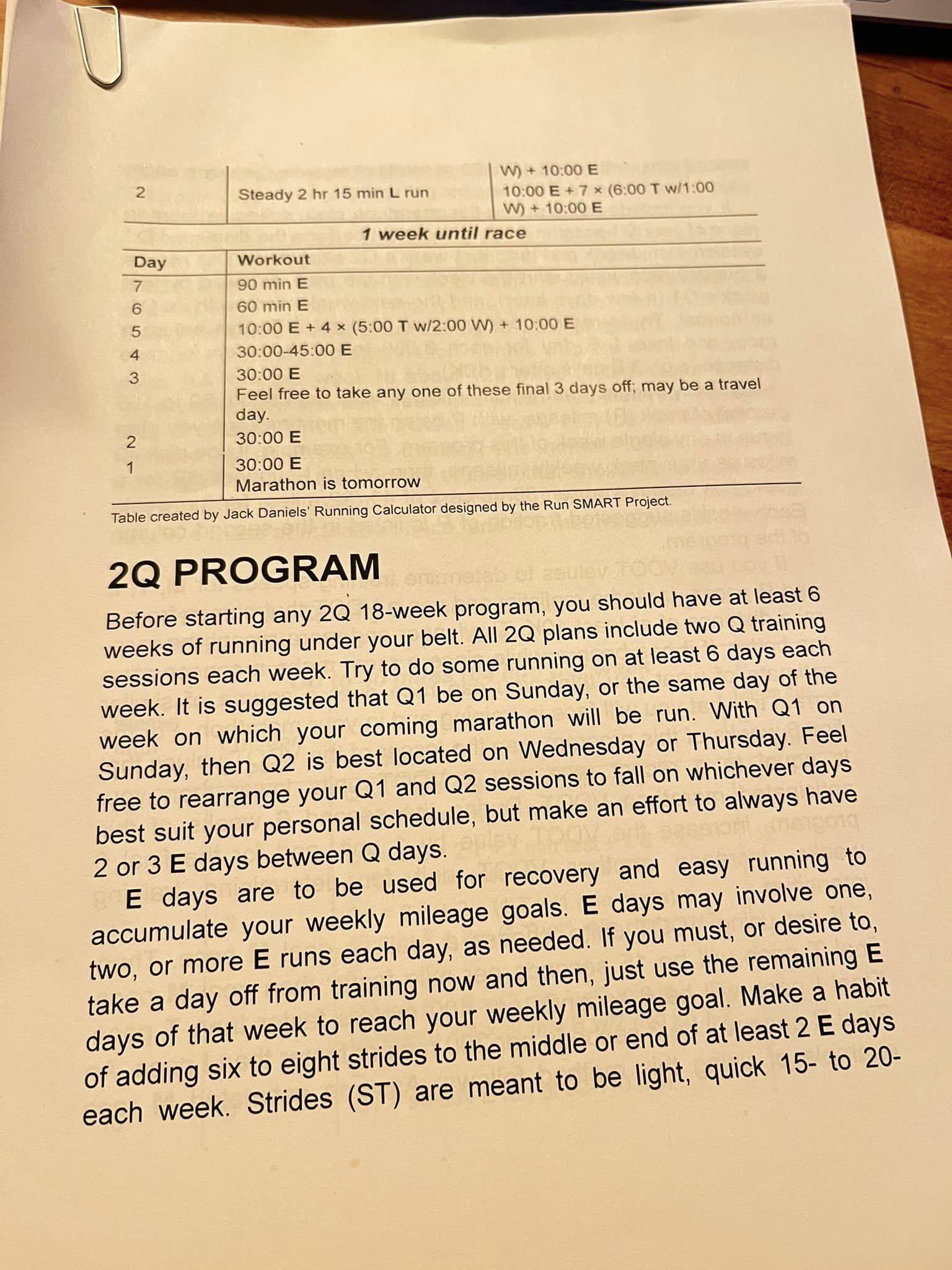
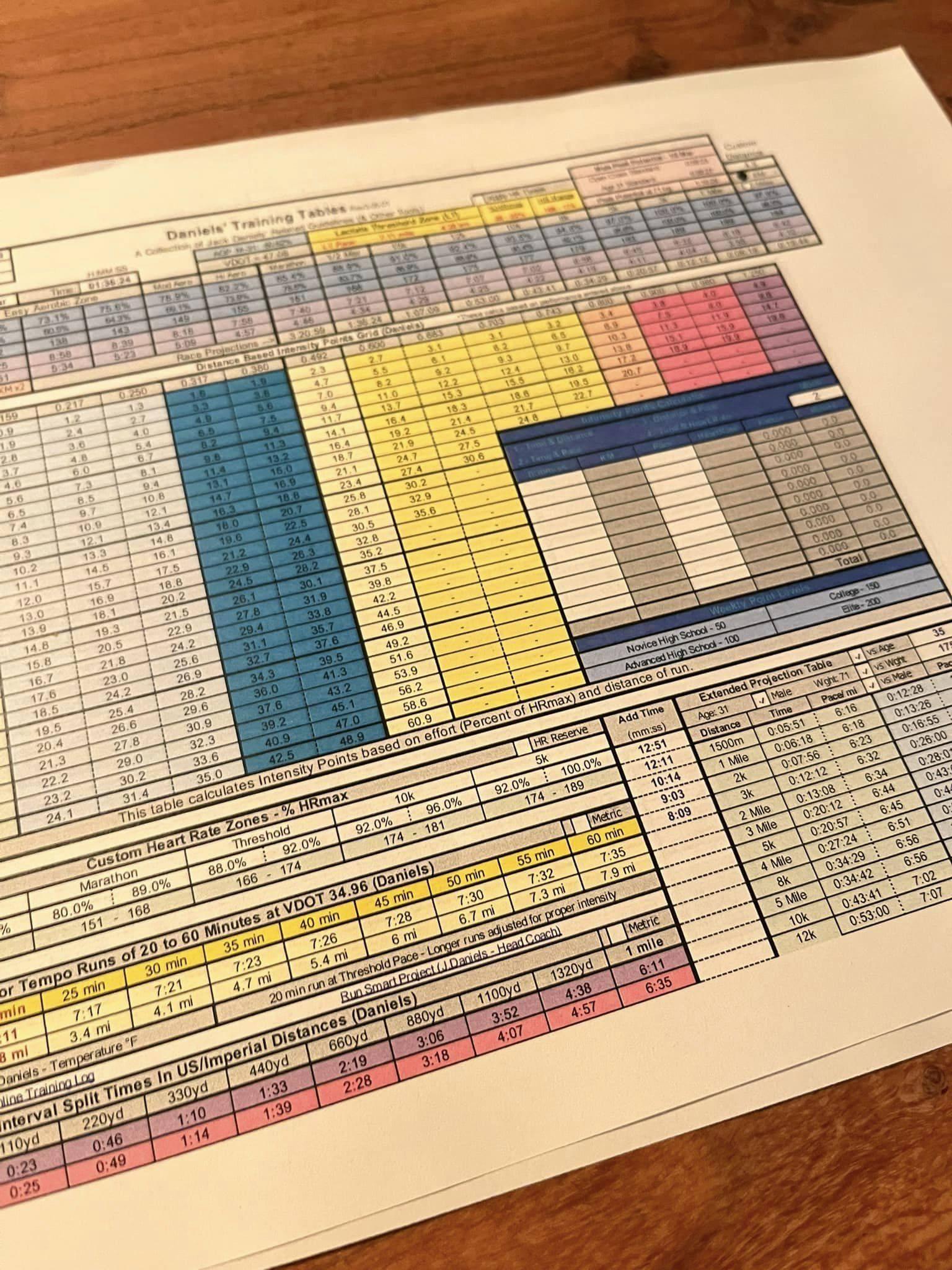
I chose the 2Q program for 18 weeks but had to modify it due to my 3-month (12 weeks) time frame, omitting the first 6 weeks of JD’s plan. The 2Q, designed for intense training, fits well with my usual mileage of 90-100 km per week, consisting of two quality sessions per week: Q1 being a long run combined with speed work, and Q2 involving a mid-distance run paired with a tempo/marathon pace run. I scheduled Q1 on Tuesdays and Q2 on Saturdays, cycling through this plan. I found JD’s running plan flexible compared to others, allowing for easy runs on different days, but it’s not suitable for beginners due to its intensity, requiring a solid time commitment for quality sessions.
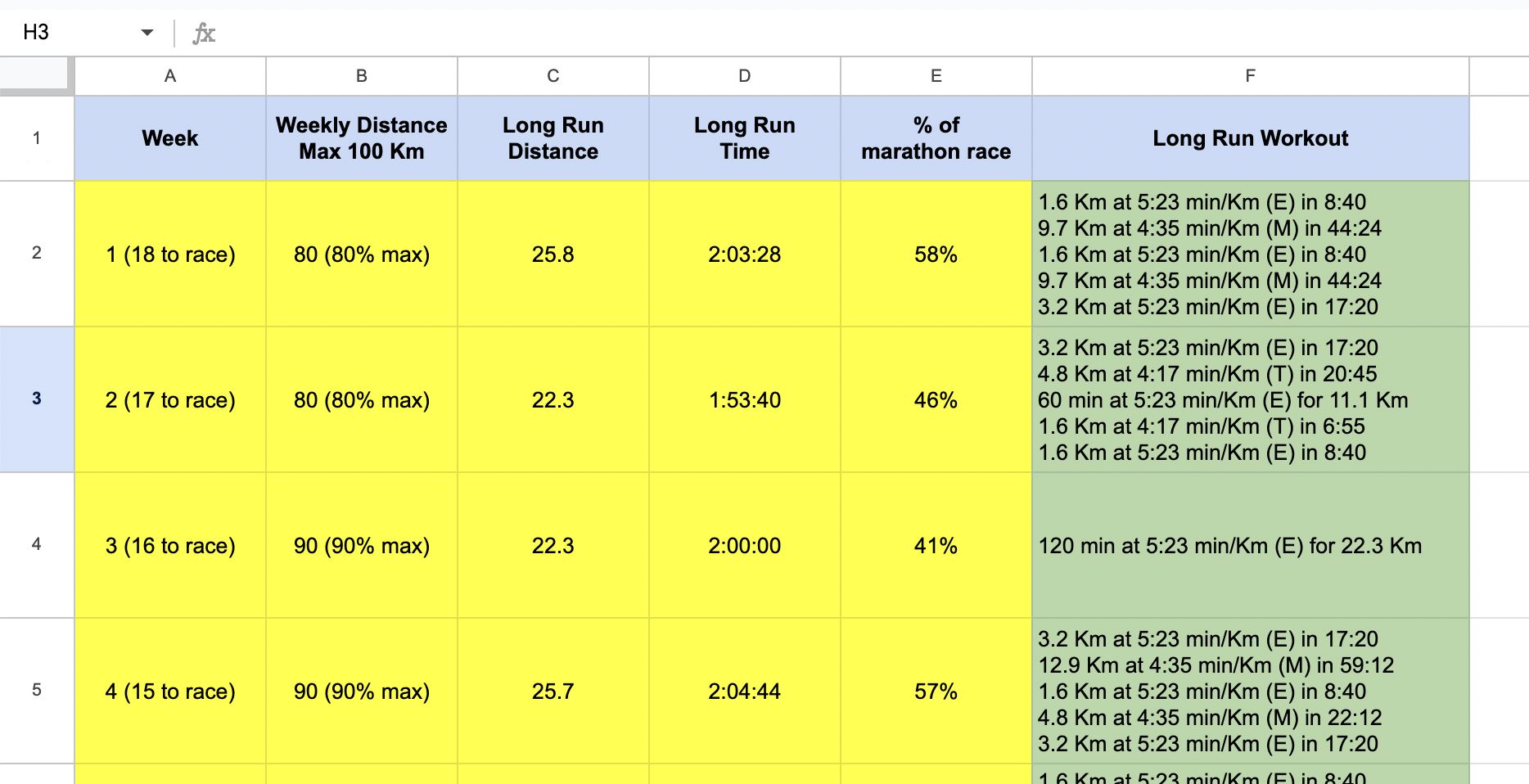
To follow JD’s program, I needed to determine my running paces for various training types, using VDOT values that JAck developed with his colleaque, which indicate maximum potential compared to VO2Max and recent race paces. I used vdoto2.com to calculate these paces (based on VDOT), which include:
- Easy (E): To strengthen body and heart muscles, generate mitochondria (cellular adaptation)
- Marathon (M): To familiarize with race pace
- Threshold (T): To increase endurance
- Interval (I): To boost VO2 Max and aerobic training
- Repetition (R): To enhance speed and running economy
I adjusted my easy runs to make up 80% of my total mileage, ensuring that Interval/Tempo/Threshold runs did not exceed 20%, in line with the Polarized method.
Keep in mind that Daniels training program is quite tough. So, make sure that you have enough time for it and have to set the realistic mileage per week. Then, you have to choose which days you want to run quality sessions (2 Q days per weeks). I put Q day on Tue and Fri, and other days I run easy. Yes, no rest day!
You should not run faster than the pace that the calculator suggested, even tho you feel that you can run faster, because if you run faster a little bit, it would not give you much performance but you will probably increase the risk of injury instead. So in his book he explains everything.
How much should I run?
- Threshold (Tempo) should not be more than 10% of the total weekly mileage
- Interval should not be more than 8% of the total mileage
- Repetition should not be more than 2 min per week
2. My Training
I trained both on tracks and roads, averaging 90-100 km per week. Before and after runs, I warmed up for about 5 minutes (any exercise for runners video on YouTube). I often run with friends from the Adidas Runners Zurich club. I found JD’s program challenging, especially with recovery and speed work on the same day, where the easy pace wasn’t slow at all, so I recommend adjusting the easy pace based on personal comfort (easy pace should be conversational pace).
I used a Garmin watch to record data and analyze my performance, checking metrics like cadence, stride length, ground contact time, time spent in different (HR) zones, and pace stability.
My shoe rotation included three types:
- Daily training (two pairs)
- Speed work training
- Racing shoes (also used for tempo workouts before race day).
During long runs, I also took energy gels to practice and prepare for race day. I also followed drill tutorials by Aj.Aekawit (Head coach of Thailand athletes team) on YouTube, which significantly helped improve my running form. Apart from running, I did cross-training activities like cycling, hiking, and strength training.
From my further research, I gained more insights:
- Our bodies use energy from all sources (phosphagen, glycogen, fatty acids) simultaneously, depending on duration and intensity.
- Training in HR Zone 2 boosts cellular adaptation, enhancing endurance and allowing longer tempo running.
- Threshold/tempo training increases lactic threshold, preventing early energy depletion.
- Interval training enhances VO2Max.
I also participated in a half-marathon to gauge my best time for calculating marathon paces.
3. Nutrition and Self-Care
I studied nutrition through YouTube and podcasts like ZOE Science & Nutrition. My daily meals included three main meals and one snack:
- Breakfast: oatmeal with banana, berries, and milk.
- Lunch: regular meals focusing on carbohydrates.
- Afternoon snack: light snacks.
- Dinner: protein-rich post-run meal.
I aimed to drink about 3-4 liters of water daily, depending on activity levels, along with a vitamin drink.
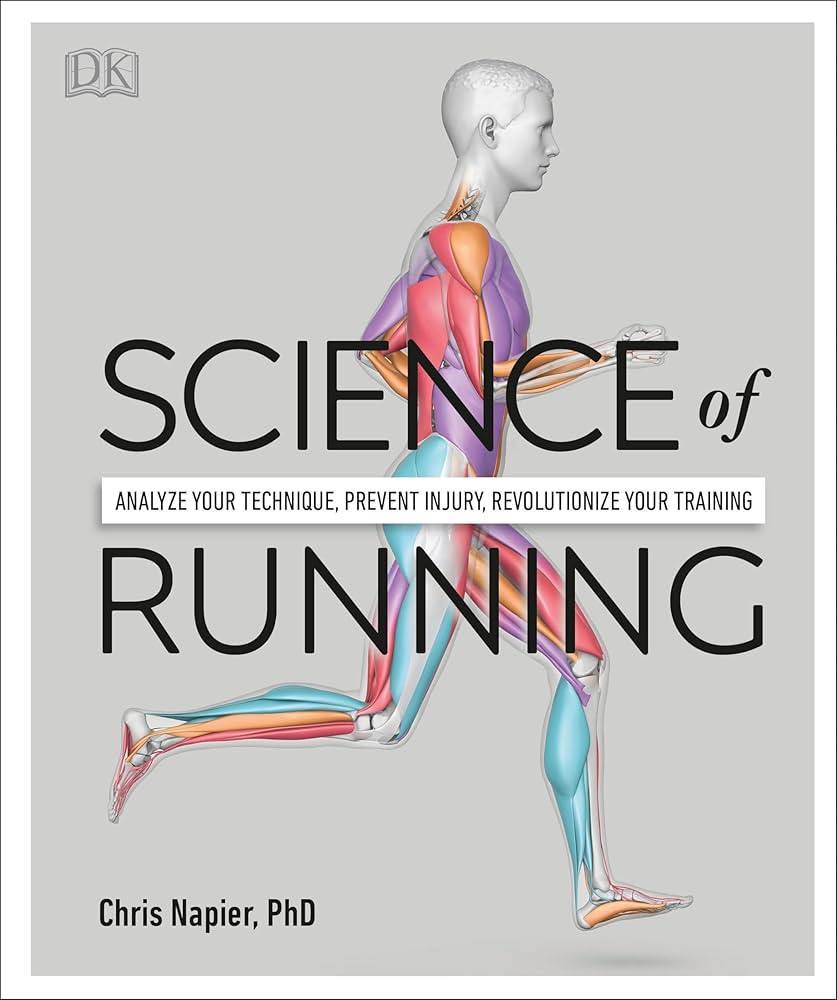

To prevent injuries, I studied running form and injury prevention from Science of Running by Chris Napier, a well-illustrated and concise book. I also hung out with friends occasionally, ensuring I got about 6-7 hours of sleep, which I was fortunate to manage without trouble waking up early.
4. Final Phase of Training and Race Day
In the last two weeks leading up to the marathon, I entered the tapering phase, reducing my running volume, with the final week involving even less running to save energy for race day, Sunday. I loaded up on carbs, including rice, pasta, and pizza, particularly in the last two days before the race with a shakeout run of about 5 km to keep muscles active.
On race day, I went to bed around 10 PM and woke at 6 AM, starting with washing my face and eating bread, banana, and 500 mL of Maurten mix drink. An hour before the race, I drank another 100 mL and took a caffeine gel 15 minutes before starting, followed by another 100 mL of water.
During the first 5 km, I maintained my intended pace of about 4:45 minutes/km, but felt capable of going faster, so I adjusted to 4:20 - 4:30 minutes/km, aiming for a sub 3:15 finish. I ran with the pace maker for the first half but faced challenges:
I consumed gels every 7 km (at km 7, 14, 21, 28, 35) but struggled to drink water while running. At each water station, I had to significantly slow down or even stop to hydrate, wasting valuable time. I recommend practicing drinking while running to avoid this issue in the future.
Another major issue arose around km 38 when I began experiencing cramps, forcing me to slow my pace to prevent severe cramping. In hindsight, I’ll carry salt tabs next time to prevent cramps during the second half, which unfortunately prevented me from achieving my sub 3:15 goal. I plan to learn from this experience for future races.
Summary
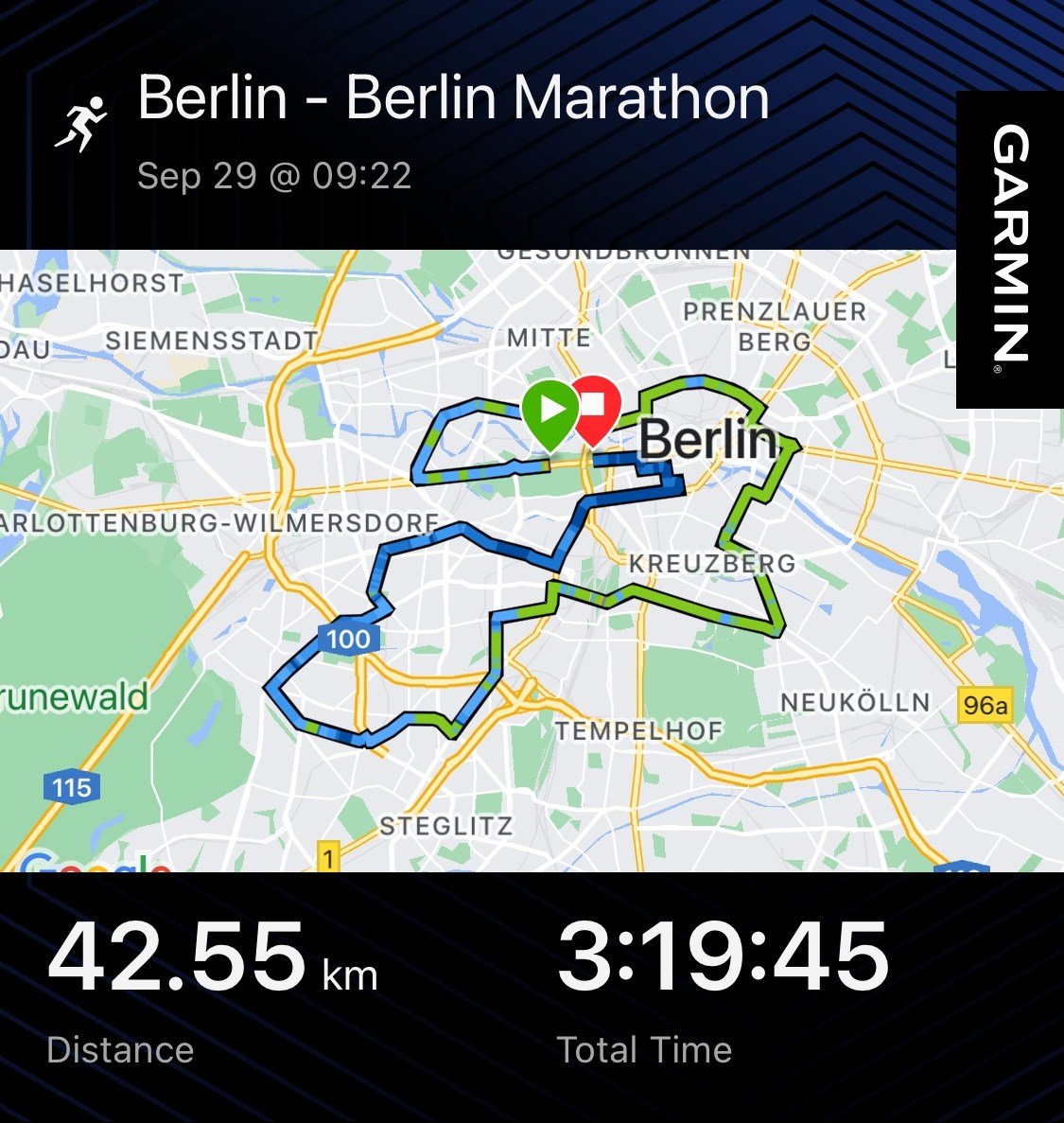
From the training program outlined above, I completed the marathon in 3:19 hours, achieving a personal best (PB) with an average pace of 4:42 minutes/km at the 50th Berlin Marathon (September 29th, 2024).
My favorite quote in the JD’s book is “A good race or run is never a fluke.” It’s so true because PBs result from training and discipline. Even if you don’t achieve a PB on race day, it’s crucial to stay resilient. Marathon running (42.195 km) requires strategy and is influenced by many factors; even a minor mistake on race day can derail all the training efforts.
Training for endurance to run a marathon is incredible. It’s about dedicating effort to reach your goals and understanding the science behind running. Despite the sacrifices – early mornings, missing social gatherings, dietary restrictions, and spending on gear – the reward is your achievements and new friendships with runners from around the world who share the same passion.
Finally, I want to thank my friends at Adidas Runners Zurich for everything!
I hope this post is benefitial and inspiring for those who are planing to train for a marathon 😊
Links for Further Study:
- My curated YouTube playlist: YouTube Playlist
- VDOT pace calculator: VDOT Calculator
- JD’s long run program calculator: Long Run Calculator